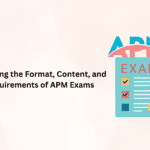Are you someone who loves web application testing tools and wants to know everything there is to know about them? If so, we’ve created this blog to help answer all of your web application testing questions.
What is Web Application Testing?
Web application testing is the process of testing a web application to ensure it is functioning correctly and meets the specified requirements. This type of testing focuses on verifying that the application is reliable, performs well, and is easy to use. It involves testing the application’s functionality, usability, compatibility, security, and performance. The goal of web application testing is to identify any errors or issues that may affect the quality and behavior of the application and to ensure it meets the needs of the end user. Web application testing can be performed manually or using automation tools.
Why Web App Testing Automation?
There are several important factors that make web application testing automation necessary for your next App release.
- Increased test coverage: Automation allows for a larger number of tests to be run in a shorter amount of time, leading to higher test coverage and improved App quality.
- Time-savvy: Automation saves time by reducing the need for manual testing and repetitive tasks. This allows the testing team to focus on more important tasks.
- Improved efficiency: The efficiency of the development team increases as they can focus on important aspects, such as the production environment, rather than spending time on repetitive tasks like deployment and regression testing.
- Accurate and reliable results: Automation leads to more accurate and reliable results as it eliminates the possibility of human error.
- Defect detection at an early stage: Automated testing can detect defects at an early stage of development, resulting in a bug-free App.
- Cost-effective: In the long run, automation can be more cost-effective as it reduces the need for manual testing and the time and resources required to test the application.
Challenges of Automating Web App Testing
There are several challenges to consider when automating web application testing, including:
- Ensuring that all elements on the web page can be handled by the automation testing tool.
- Making sure that the test cases can be run on different operating systems, browsers, and devices.
- Integrating the tool with the build process and test automation framework.
- Choosing the right tool for your project.
How to Choose the Correct Tool for Web App Testing?
Not all web application testing tools are created equal. When selecting the ideal tool for your testing needs, you should consider the following factors:
- Cost: A costly commercial testing tool may not be the best option if you have limited funds. On the other hand, if you plan to hire testers who will need to use the tool, be sure it fits within your budget.
- Maintenance: An important factor to consider when selecting a testing tool is whether it will be sustainable in the long term.
- Functionality: When purchasing an automation tool, it’s important to check its functionality to ensure it can cover all of your testing requirements.
- Ease of use: Choose a tool that is easy to use and familiar to you. If it is too complex for developers and testers to understand, they are less likely to use it effectively.
- Integration: You may want to integrate tools for different types of testing into one.
Types of Web App Testing
Web app testing can be executed manually or with the help of automation testing tools. Let’s look into some web app testing types depending on the programming languages, architecture, technologies, and functionalities.
1. Performance Testing
Performance testing measures the time it takes to perform tests, such as searching for a record or loading a page on a database. It is done using testing tools that simulate many concurrent users to see how the website performs under heavy load.
2. Cross-browser Testing
Cross-browser testing involves monitoring how efficiently a website functions on several browsers, like Internet Explorer, Firefox, and Chrome. A distinct version of each browser can also be leveraged since some websites perform differently on older versions compared to new ones.
3. Functional Testing
Functional testing tests the core functionality of your apps. You test that the right buttons are present and that when you click them, you get the expected results. Any app can be tested functionally, from the front end to the back end.
4. Security Testing
Security testing, such as penetration testing, checks how well your application is protected against malicious attacks. It is an important type of testing for any application handling sensitive data.
5. Usability Testing
The main goal of usability testing is to identify any issues with the navigation or design of a website that might make it difficult for customers to use or find the information they need. Usability testing involves having users try to complete tasks while a tester observes them. Any problems encountered during these tasks should be documented and fixed later
Some Popular Web App Testing Tools
In this competitive world, everyone wants perfection, and companies are constantly launching new products to meet these expectations. There are now many excellent web application testing tools that have greatly reduced the need for manual testing.
Here are some leading web application testing tools that you can use for your current or upcoming projects:
- pCloudy
- Water
- Katalon Studio
- Selenium
- TestComplete
- Tosca Testsuite
- Telerik TestStudio
- TestingWhiz
- Sahi
- Ranorex
All these web app testing tools are adopted worldwide as they have brought a massive revolution to the Quality Assurance world.
Conclusion
In conclusion, web application testing is an essential part of the development process. It ensures that the application is reliable, performs well, and is easy to use. If your web application is released with errors, you will ultimately pay the price in the long run. While web automation testing is important, it is only one piece of the puzzle in maintaining and creating a high-quality web application.







